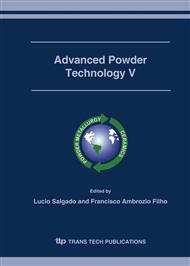p.117
p.126
p.133
p.140
p.146
p.152
p.158
p.164
p.170
Effect of Grain Size,Lattice Defects and Crystalline Orientation on the Coercivity of Sintered Magnets
Abstract:
The coercivity of sintered magnets like barium ferrite (BaFe12O19), samarium-cobalt (SmCo5) or neodymium-iron-boron (Nd2Fe14B) is largely affected by the grain size. A method to evaluate coercivity behavior as function of the crystalline orientation, including also the effects of grain size and lattice defects, is presented. Expressions were deduced to estimate the critical size of nucleus for spontaneous reversion of magnetization. The model indicates that the nucleation in grains of materials with high magnetocrystalline anisotropy only can begin by domain rotation. The model also predicts that the surface condition of grains is very important for the coercivity. A qualitative explanation is offered for the fact that materials with higher coercivity (or with smaller grain size) tend to follow an angular dependence of the coercivity similar to that given by the Stoner-Wohlfarth model, while materials with lower coercivity (or with larger grain size) tend to follow an angular dependence of the coercivity similar to 1 / cos theta.
Info:
Periodical:
Pages:
146-151
Citation:
Online since:
November 2006
Authors:
Keywords:
Price:
Сopyright:
© 2006 Trans Tech Publications Ltd. All Rights Reserved
Share:
Citation:


